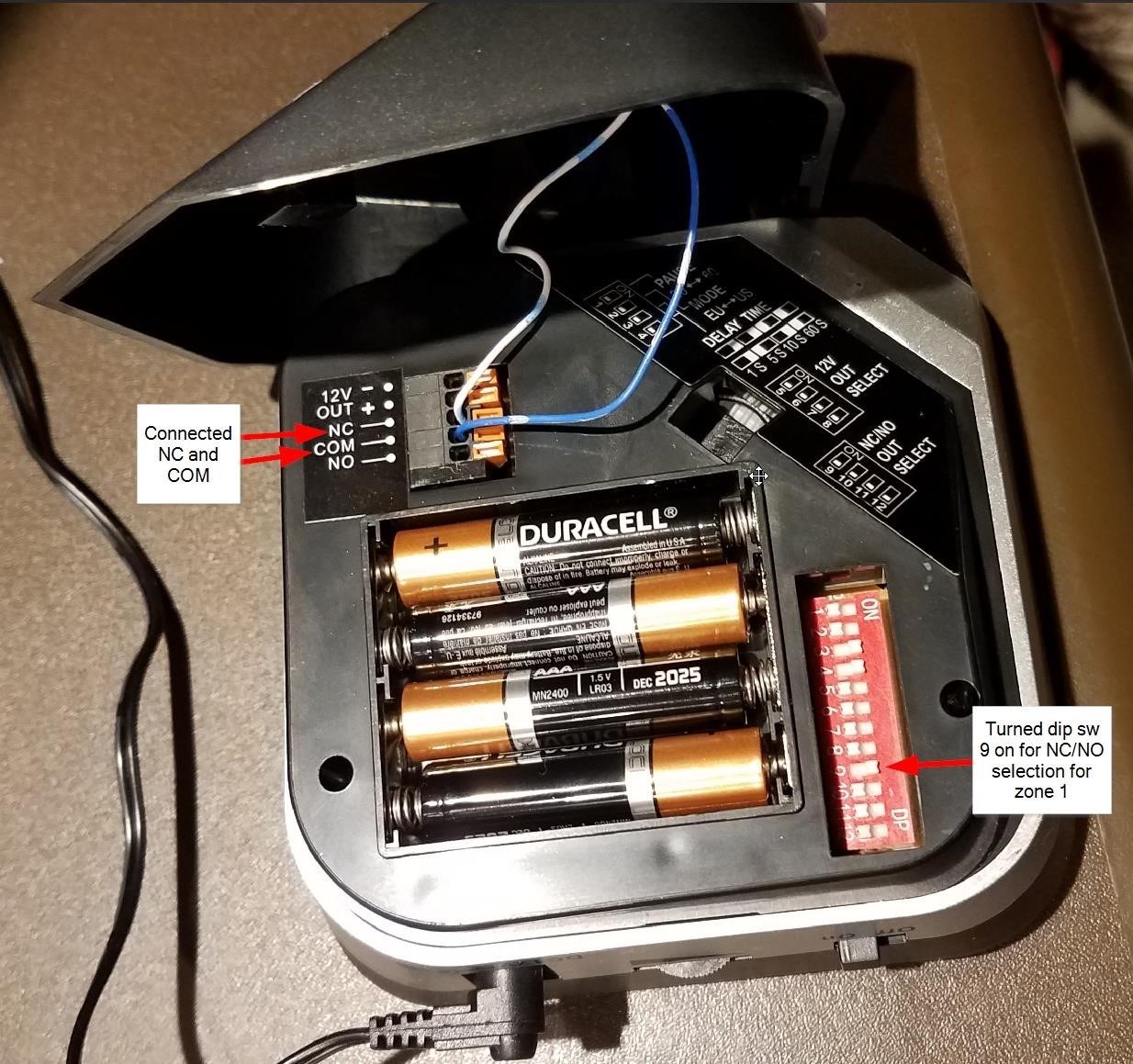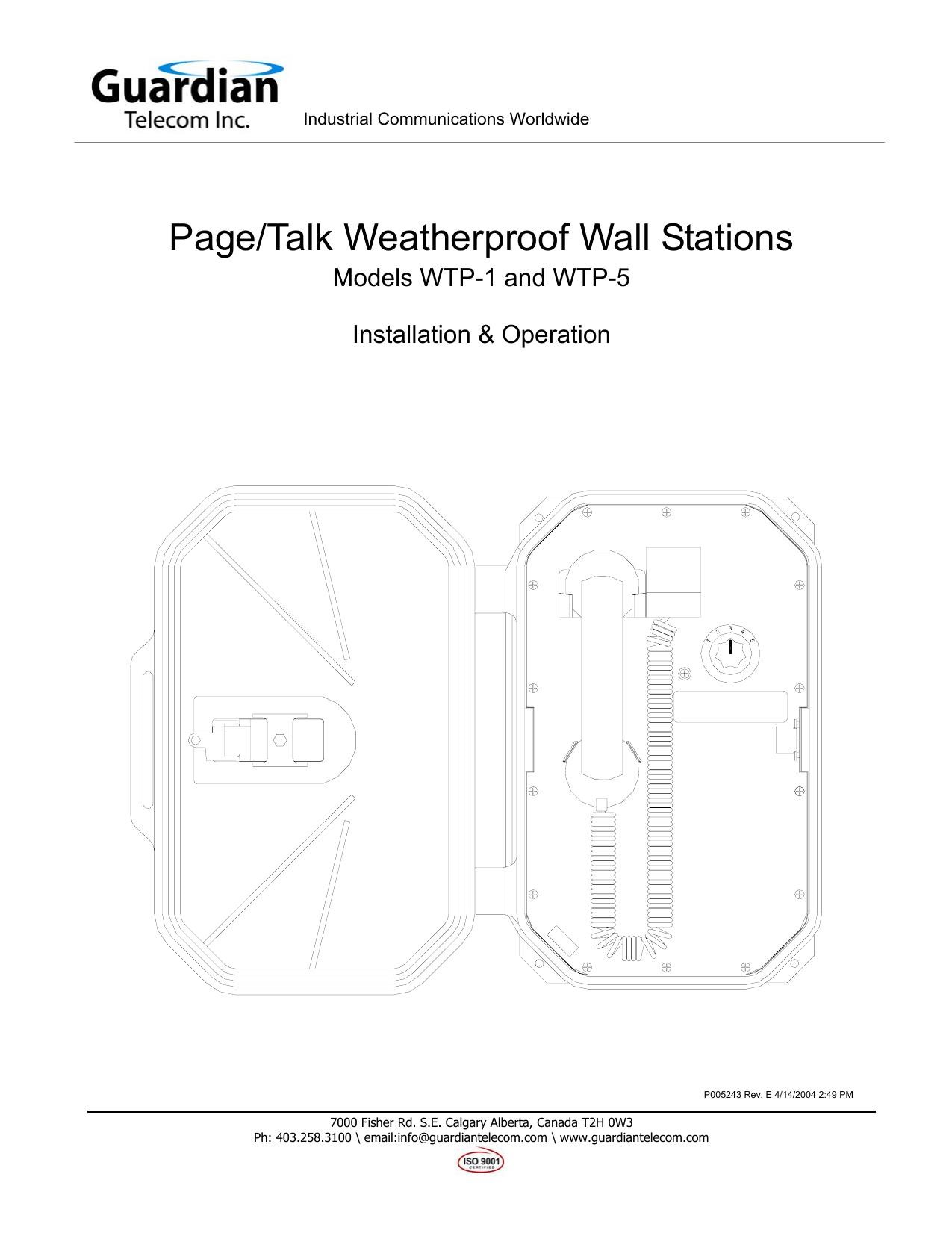
Guardline Manual⁚ A Comprehensive Guide
This manual provides a complete guide to Guardline driveway alarm systems, covering installation, setup, troubleshooting, and maintenance. Learn about the GL2000 and GL5000 models, sensor pairing, sensitivity adjustments, and more; Includes contact information for customer support.
Guardline driveway alarm systems offer reliable security for your home or property. These wireless systems utilize sensors to detect motion and alert you via a receiver, providing timely notification of potential intrusions. The systems are designed for ease of installation and use, with clear instructions provided in this manual. Key features include adjustable sensitivity for optimal performance in various environments, long-range transmission for expansive coverage (500ft for GL2000, 1/4 mile for GL5000), and the ability to support multiple sensors and receivers. Guardline systems are a cost-effective solution for enhancing home security, providing peace of mind knowing that your property is protected. The user-friendly design makes setup straightforward, even for those unfamiliar with security systems. This manual will guide you through every step of the process, from initial setup to advanced features and troubleshooting. Whether you choose the GL2000 or GL5000 model, Guardline delivers a dependable and easy-to-use security solution. Remember to consult this manual regularly for optimal system performance and to address any issues that may arise.
GL2000 and GL5000 Models⁚ Key Differences and Features
Guardline offers two primary driveway alarm models⁚ the GL2000 and the GL5000. While both share core functionalities like wireless operation and adjustable sensitivity, key distinctions lie in their range and capacity. The GL2000 boasts a reliable range of 500 feet (150 meters), ideal for smaller driveways or properties with limited space. Its compact design and straightforward setup make it a popular choice for users prioritizing simplicity. Conversely, the GL5000 significantly extends coverage to a quarter-mile (400 meters), making it perfect for larger properties or those requiring extended detection zones. This increased range comes with added versatility in placement and coverage, accommodating diverse property layouts. Both models support multiple sensors and receivers, allowing customization to suit individual needs. However, consider your specific property size and security requirements when choosing between the two. While the GL5000 offers superior range, the GL2000 provides a more compact and economical solution for smaller spaces. Both models are backed by Guardline’s commitment to reliable performance and user-friendly design. Choose the model that best aligns with your specific needs and property dimensions.
System Components⁚ Receiver, Sensors, and Accessories
The Guardline Driveway Alarm System comprises several key components working in concert to provide reliable security. The core element is the receiver unit, which acts as the central hub, receiving signals from the sensors and emitting audible or visual alerts. This unit typically features adjustable volume and chime settings, providing customization to suit individual preferences and environmental conditions. The wireless sensors are strategically placed to monitor the designated driveway area. These sensors utilize motion detection technology, triggering an alert upon vehicle or pedestrian movement. Multiple sensors can be paired with a single receiver, allowing for comprehensive coverage across various zones. The system’s versatility allows for expansion through additional receivers and sensors, accommodating properties of varying sizes. Furthermore, Guardline offers a selection of accessories designed to enhance the functionality and convenience of the system. These may include extra receivers for expanding coverage, additional sensors for comprehensive monitoring, and mounting hardware for secure installation. Understanding the role of each component is crucial for proper setup and maintenance, ensuring the system operates at peak efficiency and provides dependable security for your property. The combination of receiver, sensors, and optional accessories provides a flexible and reliable security solution tailored to your specific needs.
Installation and Setup⁚ Step-by-Step Instructions
Installing your Guardline driveway alarm system is a straightforward process. Begin by strategically positioning the receiver unit within range of the sensors and near a power source. Ensure the receiver is placed in an area that minimizes interference from other electronic devices. Next, select optimal locations for the sensors, considering factors such as driveway width, potential obstructions, and desired detection range. Mount the sensors securely using the provided hardware, ensuring a stable and level position for accurate detection. Once the sensors are installed, power on the receiver unit and proceed to pair the sensors using the system’s designated pairing mode. Consult the provided instructions for specific details on entering pairing mode and completing the pairing process for each sensor. Following successful pairing, test the system by triggering the sensors to verify they are correctly sending signals to the receiver. Adjust sensor sensitivity and range as needed to optimize performance and minimize false alarms. Remember to check the receiver’s volume and chime settings to ensure the alerts are clearly audible. After the initial setup, periodically check the battery levels of your sensors and replace batteries as needed to maintain uninterrupted system functionality. Refer to the troubleshooting section for guidance on resolving any unexpected issues. By following these step-by-step instructions, you can ensure a seamless installation and efficient operation of your Guardline driveway alarm system.
Pairing Sensors and Receivers⁚ A Detailed Process
Pairing your Guardline sensors with the receiver is crucial for a functional system. Begin by ensuring the receiver is powered on and ready to accept new sensor pairings. Locate the “Learn” or “Pair” button on your receiver unit; this button initiates the pairing process. Press and hold the button for the specified duration (usually 3 seconds) until the indicator light confirms that the receiver is in pairing mode. Next, locate the small button on each sensor unit; this is your sensor’s pairing button. Press and hold this button on each sensor individually for a few seconds until the sensor’s indicator light confirms the pairing request has been sent. The receiver’s indicator light should confirm successful pairing for each sensor. If a sensor fails to pair, check the sensor’s battery level and ensure it is within the effective range of the receiver. Re-attempt pairing, ensuring that there are no obstructions interfering with the wireless signal. For added clarity, the user manual usually provides diagrams and illustrations of the sensor and receiver, clearly labeling the pairing buttons. If you experience persistent pairing issues, consult the troubleshooting section or contact Guardline customer support for further assistance. Once all sensors are successfully paired, test the system by triggering each sensor to ensure proper signal transmission. Proper pairing ensures that your Guardline system will reliably detect and alert you to any activity within the monitored area.
Adjusting Sensor Sensitivity and Range
Fine-tuning your Guardline system’s sensitivity and range is key to optimal performance. Overly sensitive settings may trigger false alarms from minor movements like swaying branches or passing animals, while insufficient sensitivity might miss actual intrusions. The adjustment process typically involves a small dial or switch on the sensor itself. Consult your user manual for the exact location and operation of this control. Start by setting the sensitivity to a moderate level. Test the system by observing its response to various levels of movement at different distances. Gradually increase or decrease the sensitivity based on your observations. If false alarms are frequent, reduce the sensitivity; if the system fails to detect intended movements, increase the sensitivity. Remember that environmental factors like weather conditions can affect sensor performance. Heavy rain or snow might necessitate a slight increase in sensitivity to compensate for signal interference. Similarly, strong sunlight might require slight adjustments. The range of your Guardline system, which is determined by the model, can’t be physically adjusted. However, maintaining a clear line of sight between the sensor and receiver optimizes signal strength. Avoid placing obstacles, such as dense foliage or large structures, in the path of the sensor’s beam. Regularly check and clean the sensor lens to ensure that it is free from dirt and debris that could impair its functionality. By carefully adjusting sensitivity and maintaining a clear line of sight, you can ensure your Guardline system provides reliable and accurate alerts.
Troubleshooting Common Issues and Solutions
Experiencing problems with your Guardline driveway alarm? Let’s address some common issues. If your receiver isn’t detecting anything, first check the batteries in both the receiver and the sensors. Low battery power is a frequent culprit. Replace with fresh batteries of the correct type and voltage. Next, verify that the sensors are properly paired with the receiver. Consult your manual’s pairing instructions for a step-by-step guide. If pairing is confirmed, ensure a clear line of sight exists between the sensors and the receiver; obstructions can interfere with the signal. Frequent false alarms might indicate excessive sensor sensitivity. Adjust the sensitivity setting downward to reduce triggering from minor movements. If the problem persists, try relocating the sensor to minimize interference from environmental factors like swaying branches or animals. If your receiver is emitting a constant, continuous sound instead of a chime, this usually suggests a malfunctioning component. Start by checking the batteries, then visually inspect the receiver and sensors for any signs of damage or loose connections. If the issue remains, contact Guardline customer support for assistance. Remember to record the model numbers of your receiver and sensors to aid in troubleshooting and support. Keep your manual handy for quick reference to diagrams and detailed instructions. For persistent problems, don’t hesitate to contact Guardline’s technical support team; they’re equipped to assist with more complex issues. They offer valuable assistance via phone or email.
Battery Management and Replacement
Proper battery management is crucial for optimal performance and longevity of your Guardline system. Regularly check the battery levels in both the receiver and the sensors. Low battery warnings might be indicated by flashing lights or altered chime sounds; consult your specific model’s user manual for details. The frequency of battery checks depends on usage; high-traffic areas might require more frequent monitoring. When replacing batteries, always use the correct type and voltage specified in the manual. Using incorrect batteries can damage the device and void warranties. Dispose of old batteries responsibly according to local regulations; many municipalities have battery recycling programs. For optimal battery life, consider using high-quality, long-lasting batteries designed for low-power devices. Avoid leaving batteries in the devices longer than recommended; discharged batteries can leak and corrode internal components. Keep spare batteries on hand to ensure uninterrupted operation, especially during inclement weather or periods of frequent use. Note the date of battery replacement to help track battery lifespan and predict future replacements. Regular battery maintenance helps ensure reliable detection and prevents unexpected interruptions in your system’s security functionality. Replacing batteries promptly upon noticing low-battery warnings will ensure the continued effectiveness of your Guardline driveway alarm system. Remember, a simple battery change can prevent costly repairs or system failures.
Advanced Features and Customization Options
Explore the advanced features of your Guardline system to personalize its functionality and enhance its effectiveness. Many models offer adjustable sensitivity settings, allowing you to fine-tune the system’s responsiveness to different environmental conditions. This can be particularly useful in areas with high levels of ambient noise or movement. Some models incorporate customizable chime settings, enabling you to select different tones or volumes to suit your preferences. Consider experimenting with these options to optimize the system’s performance for your specific needs. Advanced features might include the ability to connect external devices, such as additional receivers or lighting systems, expanding the system’s capabilities beyond basic driveway monitoring. Consult your user manual for a detailed explanation of these advanced features. Remember, proper configuration is key to maximizing the system’s potential. Incorrect settings could lead to false alarms or missed detections. Take the time to understand each setting and its impact on your system’s performance. If you encounter difficulties, refer to the troubleshooting section of the manual or contact customer support for assistance. By exploring and utilizing the advanced features, you can transform your Guardline system from a simple driveway alarm into a comprehensive security solution tailored to your specific requirements. Remember that these customizations are designed to enhance your security experience, providing flexibility and control over your system’s operation.
Connecting External Devices and Integrations
Enhance your Guardline system’s capabilities by connecting external devices and exploring integration options. Many Guardline models allow for the addition of extra receivers, expanding the range and coverage area of your alarm. This is especially useful for larger properties or those with multiple access points. Connecting additional receivers is typically a straightforward process, often involving a simple pairing procedure outlined in your user manual. Consider integrating your Guardline system with other smart home devices. Depending on the model and compatibility, you may be able to link your alarm to existing smart home hubs, enabling remote monitoring and control through a smartphone app or other interface. This integration can provide a centralized view of your home security systems, offering greater convenience and control. Some advanced models may allow connection to lighting systems, triggering lights upon detection of movement. This feature adds an extra layer of security and can deter potential intruders. Before connecting any external devices, always consult your user manual to ensure compatibility and follow the proper connection procedures; Improper connections could damage your equipment or compromise the system’s functionality. Take advantage of the system’s expandability and integration options to build a customized security solution that meets your specific needs and enhances your home’s security. Remember to regularly check the connections and ensure that all devices are functioning correctly. For assistance with complex integrations or troubleshooting connectivity issues, refer to the manual or contact Guardline customer support.

Safety Precautions and Important Considerations
Prioritize safety when installing and operating your Guardline driveway alarm system. Always disconnect the power source before performing any maintenance or repairs. Never attempt to modify or repair internal components yourself; contact qualified technicians for assistance. Position sensors to avoid obstructions and ensure optimal detection range. Avoid placing sensors in areas exposed to direct sunlight or extreme weather conditions, as this might affect their performance and lifespan. Properly secure all mounting hardware to prevent accidental detachment or damage. When working with electrical connections, exercise caution to prevent electrical shocks. Ensure proper grounding to minimize electrical hazards. Regularly inspect the wiring and connections for any signs of wear or damage and address any issues immediately. Children should be supervised around the system to prevent accidental damage or tampering. The system’s radio frequencies may interfere with other electronic devices, so test the system thoroughly to identify any potential conflicts. Pay attention to the battery life indicators and replace batteries promptly to avoid system malfunctions. Familiarize yourself with the system’s alarm signals and develop a plan of action for different scenarios. Store the user manual in a safe and accessible place for future reference. Always follow the manufacturer’s instructions and guidelines to ensure proper installation and operation. Contact Guardline customer support if you encounter any difficulties or have questions about the system’s safety features or operation. Remember that a properly maintained and carefully used system will offer the best protection and longevity. By prioritizing safety and following the provided guidelines, you will maximize the effectiveness and lifespan of your Guardline alarm system.
Customer Support and Contact Information
Maintaining Your Guardline System for Optimal Performance
Regular maintenance ensures your Guardline system functions optimally and extends its lifespan. Begin by periodically checking the battery levels in both the receiver and sensors, replacing them as needed. Clean the sensors’ lenses using a soft, dry cloth to remove dust and debris that might obstruct detection. Inspect all wiring and connections for any signs of damage, loose connections, or corrosion. Tighten any loose screws or connections to ensure a secure and reliable system. Avoid placing sensors in areas exposed to extreme weather conditions, which can degrade their performance and longevity. Test the system’s functionality regularly by triggering the sensors and verifying the receiver’s response. If you experience any issues, consult the troubleshooting section of this manual or contact customer support. Keep the receiver and sensors away from sources of electromagnetic interference (EMI), such as powerful motors or radio transmitters, as EMI can interfere with the system’s wireless communication. Regularly clean the receiver unit, using a soft, slightly damp cloth. Avoid using harsh chemicals or abrasive materials. Store the system’s manual in a safe location for easy access to instructions and troubleshooting guides. Consider creating a preventative maintenance schedule to ensure consistent upkeep of the system. By following these simple steps, you’ll ensure your Guardline system continues to provide reliable protection for years to come. Remember, consistent maintenance minimizes the risk of malfunctions and extends the system’s operational lifespan, offering peace of mind and ensuring the safety of your property.

Write Reviews
Leave a Comment
No Comments & Reviews